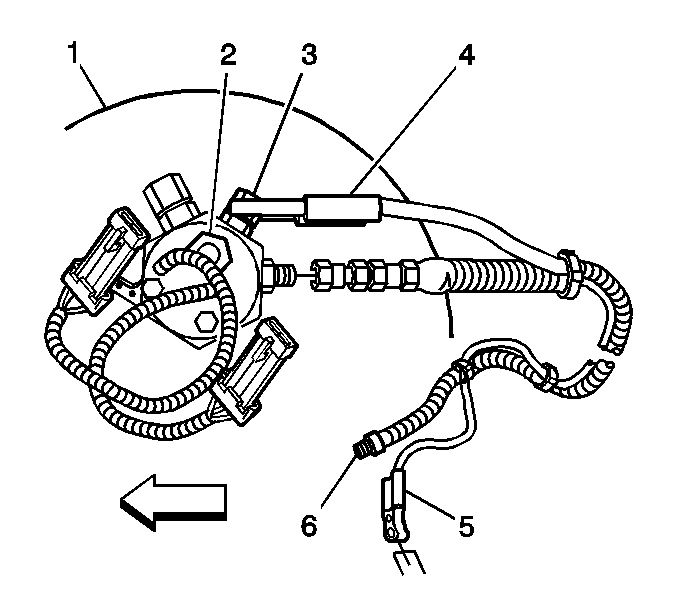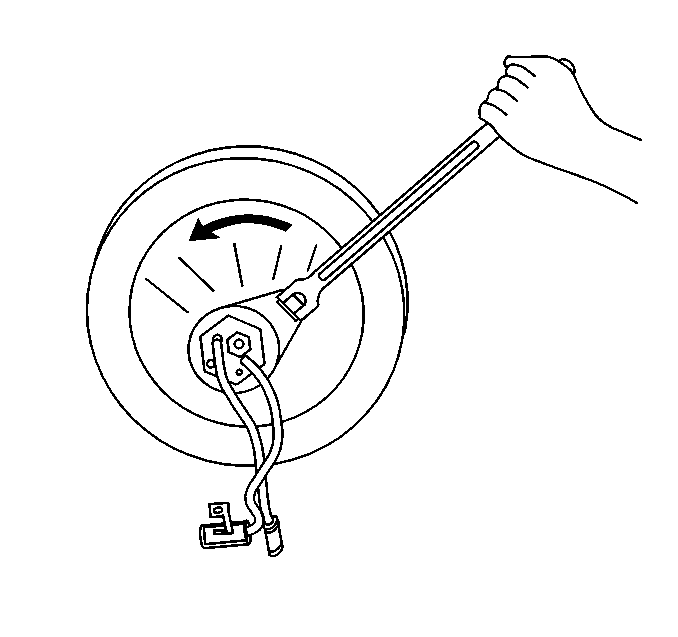Caution: Natural gas is stored under high pressure. If a leak occurs, the high
pressure could cause a personal injury. In order to prevent Compressed Natural
Gas (CNG) fuel leaks, always replace the CNG fuel system O-rings
during service.
- Install the new O-ring on the HPL.
- Lubricate the O-ring with petroleum jelly.
- Ensure that the O-ring mating surface of the tank is clean and free of debris or damage.
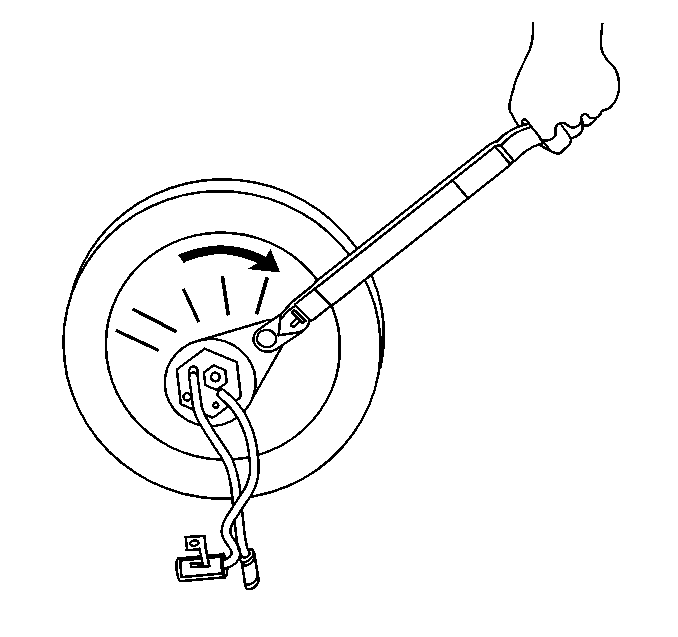
- Install the HPL.
Tighten
Tighten the HPL to a nominal torque of 305 N·m (225 lb ft) at 0 degrees. You must compensate for the torque wrench and the HPL crowfoot offset. Refer to the formula below for compensation of your
torque wrench.
Important: Ensure that the
J 43602
is straight (0 degrees) on the torque wrench.
- To obtain your dial reading, perform the following procedure:
| • | Multiply your torque wrench length in inches by 305. |
| • | 18 inch torque wrench example: 18 X 305 = 5490. |
| • | Add 3 to the length of your torque wrench. |
| • | 18 inch torque wrench example: 18 + 3 = 21. |
| • | Divide the first value obtained by the second value obtained. The result indicates the amount of torque your wrench should tighten the HPL to. |
| • | 18 inch torque wrench example: 5490 divided by 21 = 261.4. |
| • | For an 18 inch long torque wrench tighten the HPL to 261.4 N·m. |
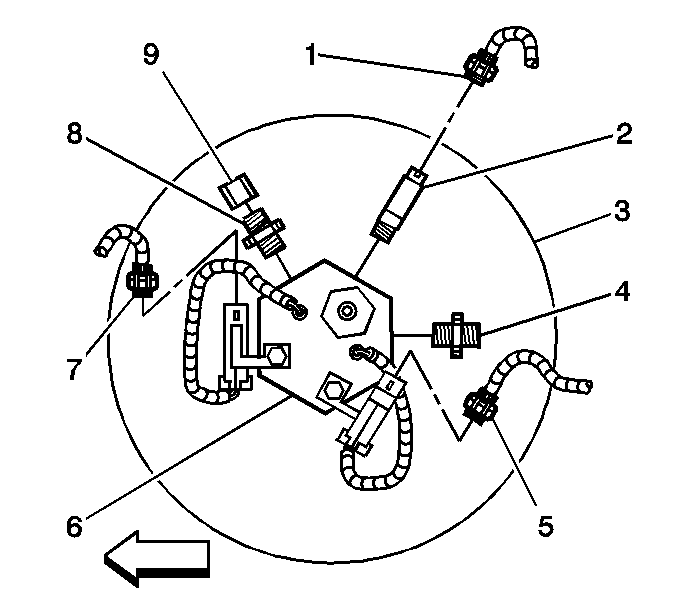
- Install the HPL fill line fitting (4) with a new O-ring. Lubricate the O-ring with petroleum jelly.
The fill line fitting has the larger thread diameter in order to accept the fill line.
Tighten
Tighten the fitting to 48 N·m (35 lb ft).
- Install the HPL outlet fitting (8) with a new O-ring. Lubricate the O-ring with petroleum jelly.
Tighten
Tighten the fitting to 48 N·m (35 lb ft).
- Install the HPL PRD line fitting (6) with a new O-ring. Lubricate the O-ring with petroleum jelly.
Tighten
Tighten the fitting to 48 N·m (35 lb ft).
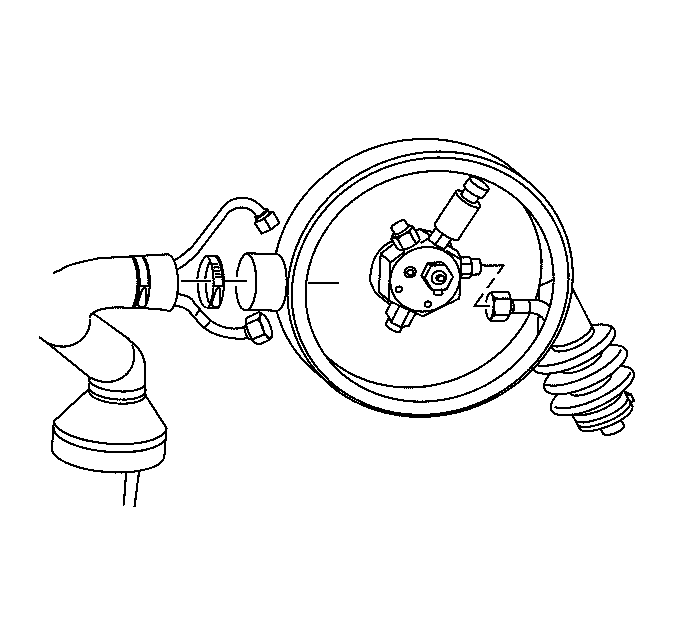
- Ensure that the lines are properly oriented to the HPL fittings. It may be necessary to rotate the CNG tank
in the mounting brackets in order to obtain the proper alignment. Refer to
Fuel Tank Replacement
for the steps necessary to loosen the tank straps and rotate the tank.
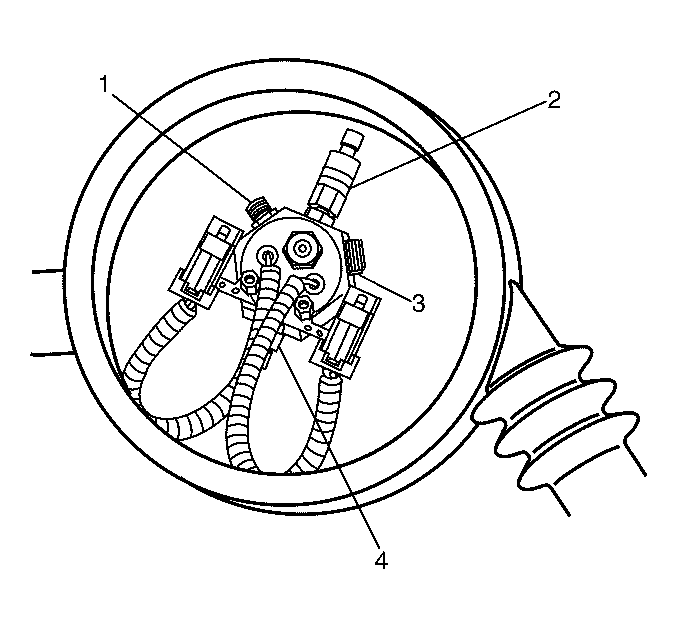
- Connect the fuel outlet line to the HPL fitting (1) with a new O-ring face seal. Lubricate the O-ring face seal using petroleum
jelly.
Tighten
Tighten the fitting to 37 N·m (27 lb ft).
- Install the fuel tank pressure (FTP) sensor (2) with a new O-ring. Lubricate the O-ring with petroleum jelly.
Tighten
Tighten the sensor to 27 N·m (20 lb ft).
- Connect the PRD line to the HPL fitting (4) with a new O-ring face seal. Lubricate the O-ring face seal using petroleum jelly.
Tighten
Tighten the fitting to 37 N·m (27 lb ft).
- Install the HPL electrical connector stand-offs.
Tighten
Tighten the stand-offs to 12 N·m (106 lb in).
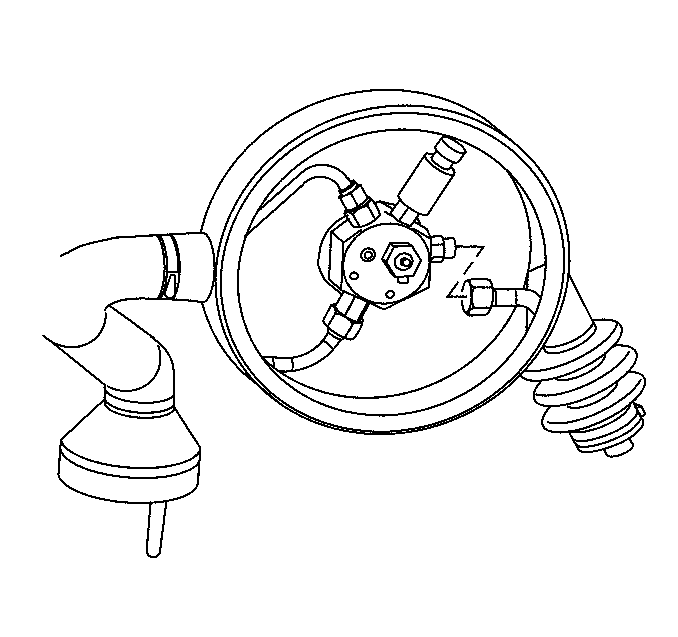
- Connect the fill line to the HPL fitting with a new O-ring face seal. Lubricate the O-ring face seal using petroleum jelly.
Tighten
Tighten the fitting to 37 N·m (27 lb ft).
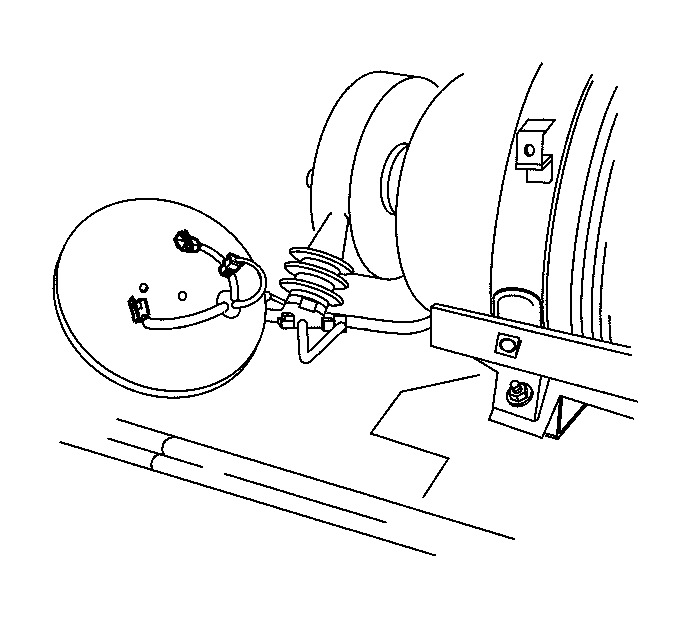
- Connect the HPL and the FTP sensor connectors.
Caution: The high pressure lock-off solenoid seal is more likely
to leak at a lower fuel pressure. Always perform the fuel leak procedure exactly
as specified. Failure to follow the proper procedures may result in serious
injury or damage to the vehicle or part.
- Begin to fill the fuel tank and with the
J 41416
check the HPL O-ring for leaks at each of the following pressures:
| 15.2. | 1500 psi (10342 kPa) |
| 15.3. | 3000 psi (20684 kPa) |
- Connect the negative battery cable. Refer to
Battery Negative Cable Disconnection and Connection
in Engine Electrical in the J Platform Service Manual.
- Start the engine and use the
J 41416
Ultrasonic Leak Detector in order to inspect for CNG fuel system leaks at each serviced fitting.
- Install the tank vent boot cover and nuts.
Tighten
Tighten the nuts to 6 N·m (54 lb in).
- Install the fuel tank cover. Refer to
Fuel Tank Cover Replacement
.
